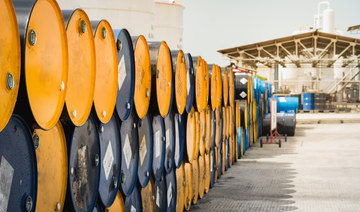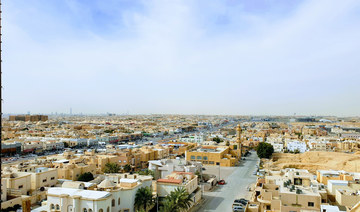DAMASCUS: Damascus on Monday imposed new limits on subsidised petrol for cars and motorbikes in regime-held areas of Syria, in the latest bid to curb a fuel crisis it blames on Western sanctions.
Owners of private cars would now be allowed just 20 liters (about 7.5 gallons) of fuel every five days, said the ministry of petroleum and mineral resources.
At petrol stations in the capital, queues hundreds of meters (yards) long have stretched along streets in the past few weeks, with drivers waiting for hours to get their fill.
Qusay, a taxi driver in his 30s, said he had camped out in his car overnight to make sure he got some fuel from a station, so far to no avail.
“I got to the front of the queue after midnight with less than 20 cars ahead, but then the petrol ran out at the station,” he told AFP, adding that “it’s still closed.”
Ahmad Al-Hamawi, 45, gave up after four long hours of waiting.
“I’ll try to forget my car in the coming days and walk to work,” said the radio program director.
The measures announced on Monday allow taxi drivers to fill up 20 liters every two days.
Motorbikes would be permitted three liters every five days, the ministry said, in what it described as a “temporary measure to fairly distribute petrol.”
The measures are the latest in a series of restrictions on the daily consumption of subsidised petrol.
On April 8, the ministry of petrol and mineral resources said it was temporarily slashing the daily cap on subsidised petrol by half, to 20 liters from 40 per vehicle.
Then on April 10 it further halved the amount to 20 liters every two days.
On Sunday, the government said it would halve the amount of fuel allocated to public institutions to run their vehicles, state news agency SANA said.
The petrol crisis follow fuel oil and cooking gas shortages over the winter.
Syrian officials have blamed the crisis on a flurry of Western sanctions targeting the Damascus regime since the start of the civil war in 2011.
In November, the US Treasury issued an advisory threatening penalties against those “involved in petroleum-related shipping transactions with the Government of Syria.”
Prime Minister Emad Khamis told journalists earlier this month that petrol shipments from Iran had been suspended for six months as Egypt was not allowing them through the Suez Canal, an allegation Cairo has denied.
The regime, backed by Iran and Russia, controls almost two-thirds of Syria after a series of victories against rebels and extremists since 2015, but the country’s main oil and gas fields in the northeast remain out of government control.
Syria imposes new fuel rations as sanctions bite
Syria imposes new fuel rations as sanctions bite
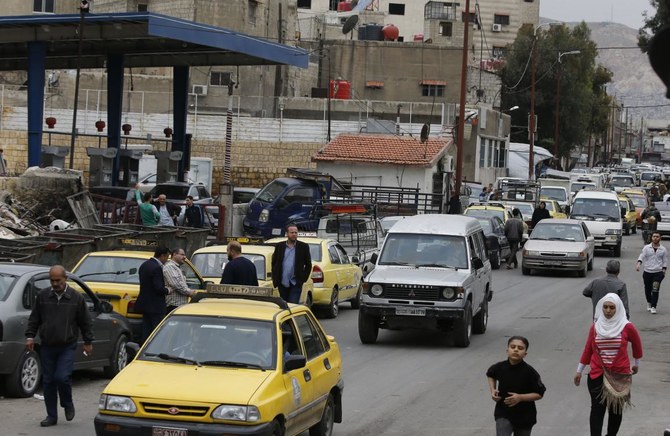
- Owners of private cars would now be allowed just 20 liters (about 7.5 gallons) of fuel every five days, the ministry said
Oil Update — prices rise on China growth, Middle East tensions
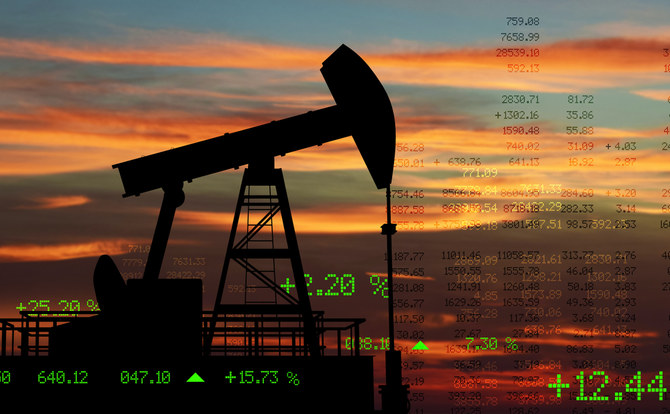
SINGAPORE: Oil prices rose on Tuesday after data showed China's economy grew faster than expected, while heightened tensions in the Middle East also kept markets on edge after Israel said it would respond to Iran’s weekend missile and drone attack, according to Reuters.
Brent futures for June delivery rose 20 cents, or 0.2 percent, to $90.30 a barrel by 10:57 a.m. Saudi time. US crude futures for May delivery rose 21 cents, or 0.3 percent, to $85.62 a barrel.
Earlier in the day oil prices had risen nearly 1 percent following the release of official data from China showing gross domestic product in the world’s biggest oil importer grew 5.3 percent in the first quarter, year-on-year, comfortably beating analysts’ expectations.
However, both benchmarks pared some gains as a raft of other Chinese indicators including real estate investment, retail sales and industrial output showed demand remained weak in the face of a protracted property crisis.
Oil prices soared last week to the highest levels since October, but fell on Monday after Iran’s weekend attack on Israel proved to be less damaging than anticipated, easing concerns of a quickly intensifying conflict that could displace crude barrels.
“Israel’s response will determine whether the escalation ends or continues. The conflict could still be contained to Israel, Iran and its proxies, with possible involvement of the US,” analysts at ANZ Research said in a note on Tuesday.
Israel’s Prime Minister Benjamin Netanyahu on Monday summoned his war cabinet for the second time in less than 24 hours to weigh how to react to Iran’s first-ever direct attack on Israel.
Iran produces more than 3 million barrels per day of crude oil as a major producer within the Organization of the Petroleum Exporting Countries.
World Bank raises Saudi Arabia’s 2025 GDP growth forecast to 5.9%
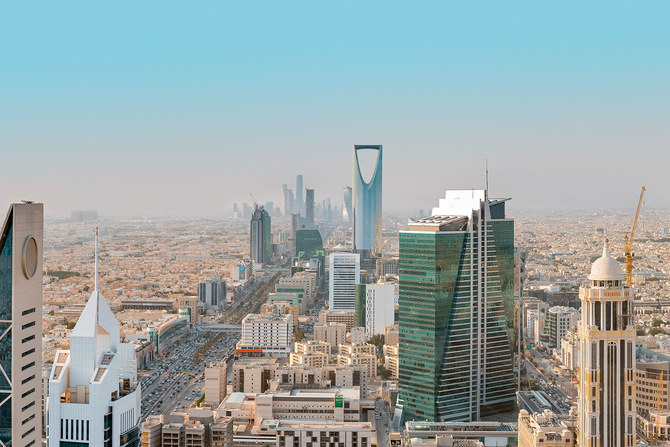
RIYADH: The World Bank has raised its expectations for Saudi Arabia’s economic growth to 5.9 percent in 2025 from 4.2 percent predicted earlier in January.
In its latest report the bank, however, revised its 2024 forecast for the Kingdom’s gross domestic product growth downward to 2.5 percent from an earlier forecast of 4.1 percent.
Concurrently, the overall GDP growth forecast for Gulf Cooperation Council countries in 2024 has been reduced to 2.8 percent, down from 3.6 percent, while the 2025 forecast has been revised to 4.7 percent from 3.8 percent.
The report also adjusted the UAE’s GDP growth forecast to 3.9 percent for 2024, up from the previously projected 3.7 percent, with a further rise to 4.1 percent in 2025, from 3.8 percent.
Kuwait’s economy is expected to expand by 2.8 percent in 2024 and increase further to 3.1 percent in 2025.
Similarly, Bahrain’s economy is likely to grow by 3.5 percent in 2024 and 3.3 percent in 2025, marking an increase from January’s projections.
Meanwhile, Qatar’s economy saw a downward revision for its 2024 forecast from 2.5 percent to 2.1 percent but an upward revision for 2025 from 3.1 percent to 3.2 percent.
Oman’s economy projections for 2024 and 2025 saw a marginal increase of 0.1 percent since the January forecast.
This adjustment reflects the broader economic trends where the surge in oil prices following Russia’s invasion of Ukraine in 2022 bolstered oil-exporting economies in the Middle East and North Africa.
In contrast, economic growth in non-oil-exporting nations — including MENA oil importers like Djibouti, Jordan, Morocco, Tunisia, and the West Bank and Gaza — has slowed.
By 2024, the growth disparity between GCC oil exporters and developing oil importers is expected to narrow to just 0.9 percentage points, marking a significant shift from 2022 when GCC countries grew 5.6 percentage points faster, the report stated.
“Developing oil exporters will grow 2.8 percent in 2024, down from 3.1 percent in 2023 while growth in developing oil importers is forecasted to decrease to 2.5 percent in 2024, down from 3.1 percent in 2023,” the report stated.
Overall, the MENA region is expected to achieve a growth rate of 2.7 percent in 2024, which aligns with pre-COVID levels but still trails the global average.
While other emerging markets and developing economies are also projected to remain below pre-pandemic growth rates, they are expected to surpass the MENA region by 1.2 percentage points in 2024.
GCC oil companies’ capex to grow by 5% to reach $115bn in 2024
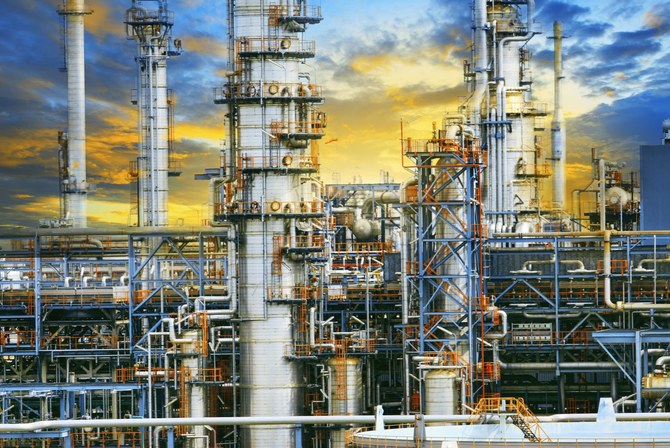
RIYADH: The capital expenditures of national oil companies in the Gulf Cooperation Council are likely to grow by 5 percent in 2024 as compared to the previous year and are expected to reach $115 billion, according to a report.
The analysis by S&P’s Global Ratings, however, does not take into account the potential surge in spending from recent expansion plans such as the North Field West Project in Qatar, which it said could significantly boost expenditures.
The report highlighted that while the growth in capital expenditure is modest, Saudi Arabia’s planned output cuts in line with the current policy of the Organization of the Petroleum Exporting Countries and its allies, known as OPEC+, is likely to decrease demand for drilling platforms, operating ratios, average daily production rates, and profitability among regional drilling companies, especially in the Kingdom.
“We stress-tested the effect of a hypothetical 15-20 percent loss of total rig demand in the region on GCC drillers, and we estimate that the debt to EBITDA (Earnings Before Interest, Taxes, Depreciation, and Amortization) of rated and publicly listed drillers based in GCC countries could increase by about 1x on average,” S&P Global Ratings Credit analyst Rawan Oueidat said.
“At this point, we think that drillers’ rating headroom could shrink, but we don’t expect any short-term rating pressure,” Oueidat added.
The agency also raised concerns about the future of capital expenditure in other oil and gas-producing countries of the GCC, following Saudi Aramco’s decision to suspend its plan to increase the Kingdom’s maximum production capacity.
Despite these concerns, the total oil capital expenditure in the region is expected to remain relatively high due to the ongoing expansion plans in Qatar and the UAE.
However, the pace and magnitude of spending are expected to impact oilfield service companies and the entire value chain, particularly drilling companies whose business models heavily rely on corporate capital expenditures.
The UAE’s Abu Dhabi National Oil Co. is set to increase its oil production capacity to 5 million barrels per day by 2027, up from 4 million bpd as of February 2024, according to the US Energy Information Administration.
Meanwhile, Qatar is aiming to boost its liquefied natural gas production capacity to 142 million tonnes annually by 2030 from the current output of 77 million tonnes.
The report predicted oil prices to average $85 per barrel for the remainder of 2024 and $80 per barrel the following year.
It also suggested that geopolitical tensions and planned production cuts by OPEC+ will support prices and enhance the cash flows of oil companies across the Gulf region.
Saudi housing program Sakani benefits over 32,000 families in Q1

RIYADH: As many as 32,343 Saudi families benefitted from Sakani’s housing options during the first quarter of 2024, marking an annual 15 percent increase.
In collaboration with the Real Estate Development Fund and financial institutions, the program provides a variety of housing support packages to encourage first-time house buyers, including non-refundable financial assistance of SR100,000 ($26,659) or SR150,000.
The number of the Kingdom’s households that purchased their first homes reached 25,391 in the first three months of the year, reflecting the objective of Sakani to offer a variety of residential options and financial solutions.
Founded in 2017 by the Saudi Ministry of Housing and the Real Estate Development Fund, the program aims to increase the proportion of families that own a home in the Kingdom to 70 percent by 2030, in line with the economic diversification strategy Vision 2030.
Figures from Sakani showed that the number of beneficiary households reached 12,184 in March, with 9,381 Saudi families obtaining their first residence.
In January, Sakani announced that more than 100,000 Saudi families benefited from the initiative in 2023, while the number of applicants who obtained their first home over that 12 month period reaching 98,475.
The core objectives of the Sakani initiative are to enable homeownership in the Kingdom by creating new housing stock, assigning plots and properties to citizens, and providing financing for their purchases.
The Sakani website and application provide a wide range of housing facilities and services, such as real estate consultancy, issuance of real estate transaction tax certificates and a display of financing institution rates.
It also provides electronic financing and the disbursement of land contracts, engineering design services, access to certified contractors, and additional services.
Qatar inflation dips 1.4% in March: official data
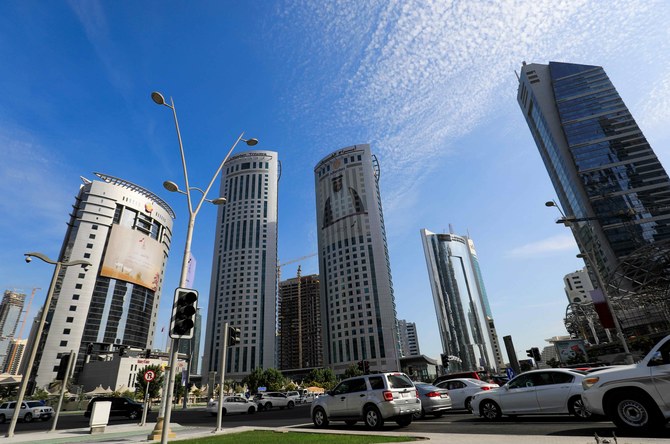
RIYADH: A fall in food and beverage prices helped drive Qatar’s inflation down 1.4 percent in March as compared to the previous month, official data showed.
According to a report released by the country’s Planning and Statistics Authority, the consumer price index reached 106.67 points in March.
Compared to February, expenses for food and beverages slid by 4.74 percent in March. Prices for recreation and culture witnessed a decline of 5.58 percent during the same period.
Similarly, costs for restaurant and hotels, as well as furniture and household equipment, decreased by 1.92 percent and 0.34 percent, respectively, in March compared to the previous month.
On the other hand, prices for clothing and footwear increased by 1.88 percent, followed by expenses for transport, which went up by 0.23 percent.
Cost of healthcare and communication remain unchanged in March, data showed.
However, the Gulf country’s annual consumer price index edge up by 0.98 percent in March compared to the same month of the previous year.
The year-on-year surge in prices was driven by recreation and culture (8.48 percent), communication (3.84 percent), education (3.48 percent), food and beverages (2.73 percent), furniture and household equipment (1.28 percent), and miscellaneous goods and services (0.83 percent).
A year-on-year decrease has been recorded in the prices of clothing and footwear, followed by housing, water, electricity and other fuel.
Qatar’s economy is expected to stabilize in the near future after experiencing a surge in 2022 due to hosting the FIFA World Cup, according to the IMF.
The Washington-based lender has forecasted a 1.9 percent growth in the country’s gross domestic product for 2024.
Highlighting Qatar’s resilience to recent global disturbances, the IMF stated that the country’s economic prospects are promising.
Furthermore, it noted that the Hamas-Israel conflict has not had any discernible impact on Qatar.
“Risks are broadly balanced. Maintaining prudent macroeconomic policy and intensifying reform efforts will support Qatar’s resilience to shocks and accelerate its economic transformation,” the IMF said.



